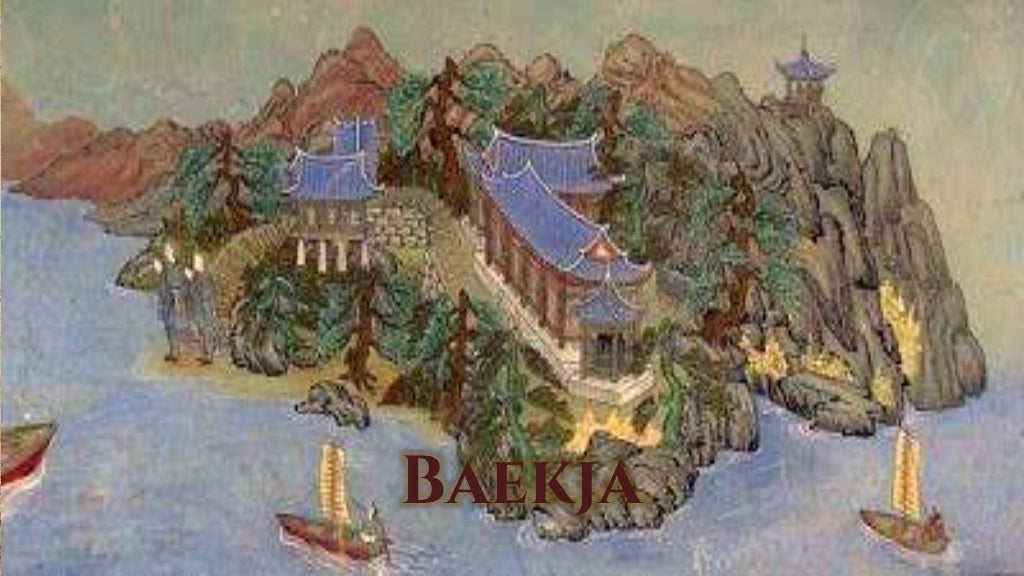
The Samguk Sagi, a 12th century CE Goryeo text, indicate that Goguryeo was founded in 37 BCE by Jumong, a prince from Buyeo, although there is archaeological evidence that suggests Goguryeo culture was in existence since the 2nd century BCE around the fall of Gojoseon, an earlier kingdom that also occupied southern Manchuria and northern Korea.

It was an active participant in the power struggle for control of the Korean peninsula as well as the foreign affairs of associated polities in China and Japan. It was one of the Three Kingdoms of Korea, along with Baekje and Shilla, and it is also considered an important regional kingdom in Manchuria by the People's Republic of China. Goguryeo was an ancient kingdom located in southern Manchuria (present-day Northeast China), southern Russian Maritime province, and the northern and central parts of the Korean peninsula. Although, it was Korean independent kingdom, Chinese government is distorting the history of this kingdom and trying to adopt this history to their history Most Koreans still love this kingdom's story and the relics of them. Goguryeo was the powerful kingdom in ancient Northeast Asia. Korean history - Goguryeo, the powerful kingdom in ancient Northeast Asia Unlike the round grass tombs of Silla and Paekche, Koguryo used pyramid shaped tombs. Ji'an ( called Gungnae seong, 國內城 ) was the Koguryo capital for from 3 AD to 427, until moved to modern day Pyongyang. General's tomb in Ji'an China, next to North Korea. Koguryo (Goguryeo ) 37 BC – 668 and the Rise of Paekche 百濟 ( Baekje ) 18 BC – 660 While Goguryeo and Baekje were more powerful for much of the era, defeating Chinese invasions several times, Silla's power gradually extended across Korea and it eventually established the first unified state to cover most of Korean peninsula by 676. The Korean kingdoms competed with each other both economically and militarily.

The Japanese Emperor stated that "it is recorded in the Chronicles of Japan that the mother of Emperor Kammu was of the line of King Muryeong of Baekje," and "I believe it was fortunate to see such culture and skills transmitted from Korea to Japan."

Census records from early Japan show that most Japanese aristocratic clans traced their lineage to the Korean peninsula. During this period, Koreans played an important role as a transmitter of cultural advances, aiding the formation of early Japanese culture and politics. In the early Common Era, the Three Kingdoms (Goguryeo, Shilla, and Baekje) conquered other successor states of Gojoseon and came to dominate the peninsula and much of Manchuria. Migration to Japan continued, affecting the formation of its early states by introducing such things as Buddhism and religious books, Confucianism and classic texts, Chinese and Korean political organizational structures, artisans and craftsmen, artistic and architectural designs, Chinese and Korean music and dance, styles of dress, astrology, and calendars. The potter's wheel was introduced, more and diverse metal objects were made, precious stones and glass began to be worked, and burial was done in wooden coffins and earthenware jars.

Growing interest in literature and the arts spawned the writing of national histories, the development of a writing system that used Chinese characters to phonetically express spoken Korean, and the creation of religious structures. Buddhism became the state religion and Confucianism its ethical foundation the first educational institutions were established during this period. Animistic and shamanistic beliefs and cultural rituals gained more significance. Silla fostered dramatic development in the sciences, mathematics, culture and religion.Ī hereditary system of kingship and privileged aristocracy evolved, a state bureaucracy developed to deal with the increasingly complex domestic and foreign situation, explicit laws were promulgated, and military units were strengthened. Together with the Goguryeo and Baekje, Silla was the third of the Three States Era, controlling the southeastern region of the Korean peninsula for 1000 years. The year 57BC marks the beginning of the Silla Dynasty. 200, direct Chinese influence on these emerging states diminished as China struggled with internal problems. Although their beginnings (late 1st century B.C.) are masked in a haze of uncertainty and myth (legend tells that the first rulers of Koguryo, Silla, and the Pon Kaya state were mysteriously born of eggs), these nations probably became recognizable entities by A.D. Enter your search terms Submit search formĭuring the Three Kingdoms period, the Koguryo ( Goguryeo 고구려 高句麗 37 BCE–668 CE ), Paekje ( Baekje 백제 百濟 18 BCE–660 CE ) , and Silla (Shilla 신라 新羅 57 BC–935 CE ) kingdoms and the Kaya confederate states established hereditary monarchies and definite borders.


 0 kommentar(er)
0 kommentar(er)
